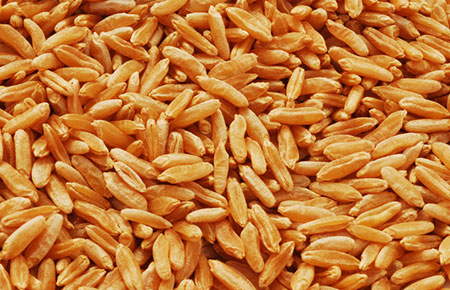|
October 8, 2013
Thereís no doubt about it - modern wheat is quickly becoming the new high-fructose corn syrup and a menace to wellness.
Gluten found in modern wheat has been linked to rheumatoid arthritis, headaches, ADHD, psoriasis, poor gut health, depression, and multiple sclerosis, and is not tolerated by people with celiac disease, irritable bowel syndrome and wheat allergy.
Some also attribute many other adverse health effects to modern wheat, such as "neurological impairment, dementia, heart disease, cataracts, diabetes, arthritis and visceral fat accumulation," in addition to a full range of intolerances.
Wheat has changed incredibly since the first cultivated varieties from 10,000 years ago.
During the post-WWII Green revolution, the Western world, with the goal of increasing agricultural output, widely hybridized wheat grains and started using synthetic fertilizers and pesticides to resist disease and to boost agricultural output.
As a result, wheat has turned into a nameless mono-crop.
Re-discovering Heritage Wheat
Ancient varieties of wheat still exist, and more people are starting to pay attention to the potential these grains hold for the gluten-sensitive and gluten-intolerant individuals, in addition to offering a healthier option for everyone who enjoys pastas and breads.
For example,
Einkorn (Triticum monococcum) is the oldest and most primitive cultivated wheat, and, based on recent laboratory testing, gluten doesnít have the same effect as regular bread gliadin and hence may be a possible alternative for the gluten intolerant.
Organizations such as the Heritage Grain Conservancy and Community Grains work to collect and protect almost-extinct varieties of ancient grains, such as einkorn, and are helping to establish a new grain economy for local and organic farmers.
Below is a short video with Eli Rogosa, the director of the Heritage Wheat Conservancy, discussing her efforts at the University of Massachusetts at Amherst to preserve ancient wheats from extinction.
"Healthier" Wheat Options
In addition to einkorn, other heritage wheat varieties include red fife (Triticum aestivum), kamut (Triticum turanicum) and many others (for example, see this list of Canadian heritage wheat varieties here).
Although only about 1 percent of the wheat grown in North America goes by an actual name, they are now more readily available to the public:
More about Milling
If you are considering growing your own wheat, or start first by buying your own heritage wheat grain, also called wheat berries, you may also want to understand the milling process.
Some will argue that freshly milled flour has much more flavor. Others claim that whole-grain milling, without separating the germ, bran and endosperm, offers more nutrition than typical wheat flour.
Even flour labeled "whole wheat" may be just white flour recombined with bran and germ, as the FDA only loosely regulates this process.
Home mills can be found in many varieties:
If you start growing and buying whole wheat berries, consider that most wheat grain varieties will last up to a year if stored properly.
Hereís a great resource with details about storing all types of whole grains.
Resources
Sources
|

